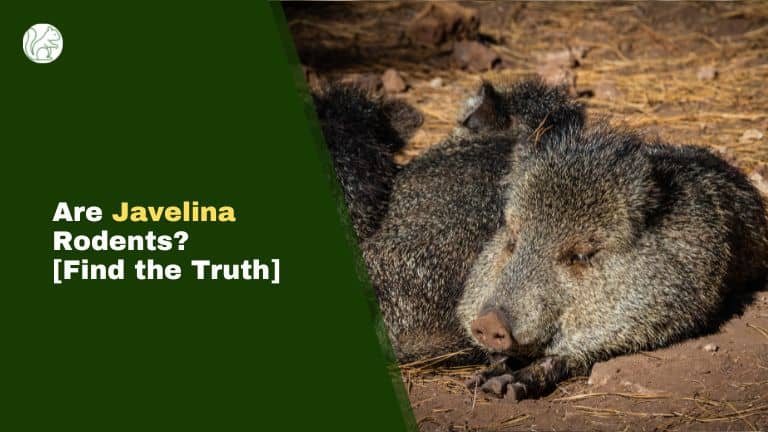With a widespread population, Javelina or Peccary is most seen in Central and South America, in the Southwestern area of North America, Texas, Arizona, New Mexico, and a lot of other places. They live in the wild and are known the most for their leather.
Javelina is often confused with rodents and at times with pigs. So, is a javelina a rodent or is it a pig? Well, they are not rodents and neither are they pigs.
Here, we will go through the points to tell you why they are not rodents. Also, we will talk about what they actually are along with their biological family and order. Stay tuned!

Is a Javelina a Rodent?
Often people confuse javelina with rodents but in reality, they are not remotely connected to rodents. Yes, both rodents and javelina are mammals but they are from different order.
While javelina is from the Tayassuidae family in the order Artiodactyla, the rodents are from the order Rodentia.
They do not look like rodents but their fur and round-shaped body confuses people at times. Javelina, also known as peccary, is mostly found in Texas, Arizona, Mexico, South America, etc.
Are Javelina and Bats Related to Rodents?
No, are bats rodents topic! Despite their similar appearances, javelinas and bats are not related to rodents. Javelinas are actually members of the peccary family, while bats belong to the order Chiroptera. Both javelinas and bats serve important roles in their ecosystems, but they are not rodents.
Javelina vs. Rodents
Incisors
A major feature of rodents is their ever-growing incisors. They have incisors that keep on growing and all they do is grind their teeth to keep them sharp and in shape.
But this feature is missing in the javelina. They don’t have ever-growing incisors; instead, they have very sharp teeth for eating their food.
Diet
Well, it’s funny that both of these animals have almost the same diet. Rodents, as usual, are mostly herbivorous. The same goes for the javelina, they are too herbivorous.
Yes, some of the rodents are omnivorous too, and the case is the same for the javelina. Their preferred food is native plants like the prickly pear, roots, tubers, agave, etc.
Land Preference
While rodents can live on the surface and under the ground, javelina prefers the surface for living.
They select the desert washes and Palo Verde forests for nesting. Another favorite place for their nests is the oak woodlands, grasslands, and mixed shrubs. Rodents too live in the woodlands, forests, grasslands, etc.
But in this case, they like the stay warm and dry. But for the javelina or any other peccary, they love rainforests and little wetlands compared to the drier ones.
Canine Teeth
Rodents never had canine teeth- you already know it! But javelina has canine teeth. Their canine teeth are sharp and they protrude from their jaws almost about one inch.
The interesting fact is canine teeth are almost missing in all herbivores’ animals. The case of the javelina is different- though they are herbivores, they have canine teeth.
These teeth are mostly found in carnivore animals so that they can tear meat or any of their food better.
Herbivores animals don’t need canine teeth because they don’t eat meat and vegetation or fruits don’t require stronger teeth like canines. While rodents and javelina both are herbivorous, only javelina have these teeth.
Are Javelina Pigs?
No, javelina is not a pig either. To some, they look like pigs but they are not pigs. They belong to the Artiodactyla order where you might see pigs, hippopotamuses, sheep, goats, camels, etc. too. As they are from the same family order, they might look a little similar.
Wrap Up
Though the javelina or collared peccaries can be domesticated and tamed, nobody has made that effort to do so. They are quite famous for their leather gloves. Also, they provide aromatic meat that a lot of people enjoy eating. You can simply breed them if you don’t want them as your pets!
